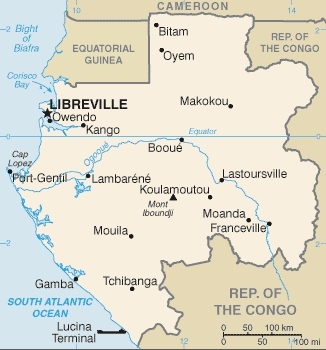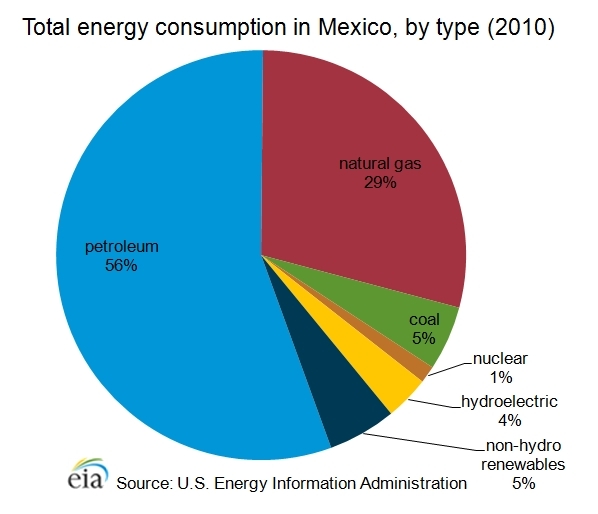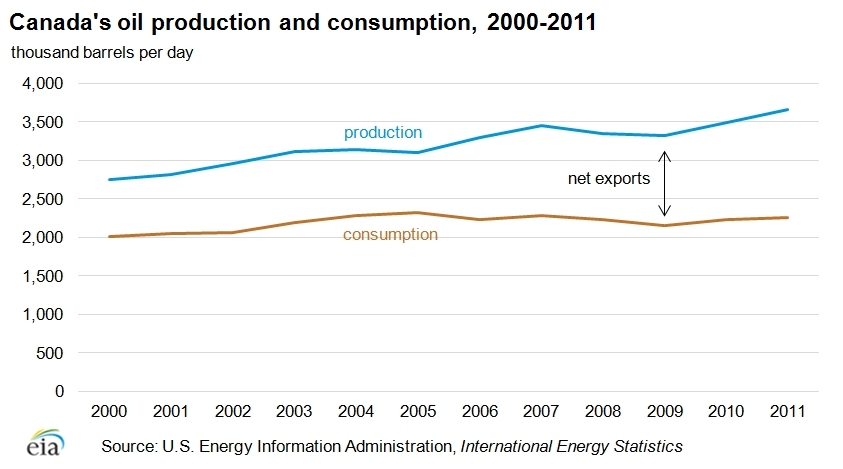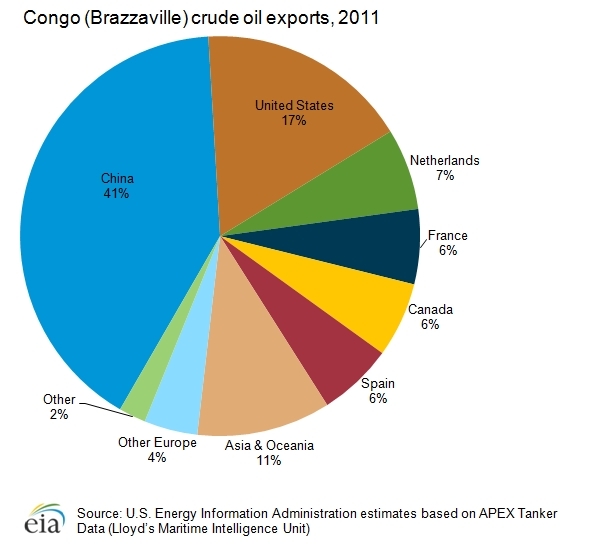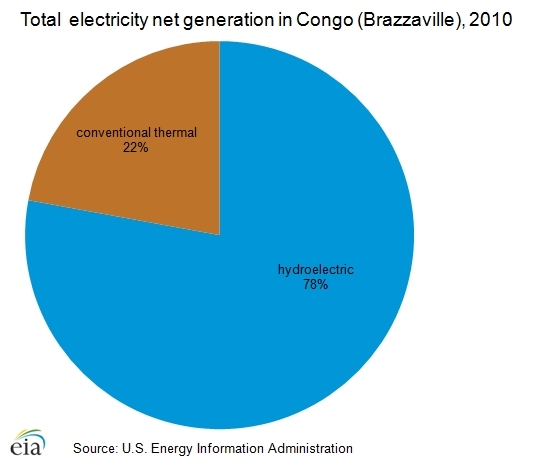Energy profile of Gabon
| Topics: |
Energy profiles of countries and regions 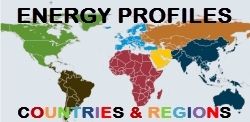
Gabon is a mature oil producing country off the coast of West Africa that has been facing declining oil production for over a decade. Oil undergirds Gabon's economy, accounting for 65 percent of government revenue and 75 percent of export revenue, according to the African Economic Outlook.
In recent years, Gabon has fallen from being the third largest oil producer in Sub-Saharan Africa to the sixth, following: Nigeria, Angola, Sudan and South Sudan (combined),Equatorial Guinea, and Congo (Brazzaville).
|
Since peak production in 1997, oil output in Gabon has declined by one-third, as large oil fields have matured. Consequently, Gabon has fallen from the third largest oil producer in Sub-Saharan Africa to the sixth. |
Aging oil fields, coupled with the lack of major new finds, have caused oil output to decline by about one-third since its peak in 1997. However, the rate of decline has slowed in recent years, as international oil companies operating in the country invested in life-expansion projects at mature fields and brought online moderate levels of new production.
The U.S. Energy Information Administration (EIA) estimates that nearly half of Gabon's energy consumption is from biomass and waste, namely wood and charcoal, which is used for household heating and cooking. Gabon's domestic power sector is underdeveloped and lacks the infrastructure required to capitalize on its natural resources, as less than 50 percent of the population is connected to the electricity grid. Most of the associated natural gas produced at oil fields is either flared and vented or reinjected to boost oil output due to the lack of pipelines connecting associated gas fields to onshore power stations. The country hopes to tap into its vast potential to expand hydropower. However, in the past, low rainfall has resulted in blackouts in areas that depend on that energy source. Most installed energy is consumed in urban hubs, namely the capitol city, Libreville, and the petroleum hub, Port-Gentil.
Contents
Oil
After two decades without a national oil company, the Gabon Oil Company was established in June 2011 to increase the government's involvement in new oil production.
According to the Oil & Gas Journal (OGJ), Gabon had 2 billion barrels of proven oil reserves as of the end of 2012, the fifth-largest in Sub-Saharan Africa after Nigeria, Angola, Sudan and South Sudan (combined), and most recently, Uganda. Most of Gabon's oil fields are located in the Port-Gentil area and are both onshore and offshore. The country's oil production has decreased by around one-third from its peak of 370,000 barrels per day (bbl/d) in 1997 to 244,000 bbl/d in 2012. Oil consumption has remained steadily low in Gabon, averaging around 14,000 bbl/d over the last decade. Therefore, more than 90 percent of output is exported, or around 250,000 bbl/d, on average over the last decade.
Historically, Gabon's oil production has been concentrated in one large oil field and supported by several smaller fields. As the largest field matured and production declined, a larger field would emerge and replace dwindling production. Dominant fields have included Gamba/Ivinga/Totou (1967-1973), Grondin Mandaros Area (1974-1988), and Rabi (1989-2010). Gabon's greatest success, the Rabi oil field, significantly boosted the country's total output in the 1990s and reached 217,000 bbl/d at its peak in 1997. Although Rabi is still one of Gabon's largest producing fields, it has matured and production has gradually declined to about 23,000 bbl/d in 2010. Since Rabi's descent, a new large field has not yet emerged, since recent exploration has yielded only modest finds.
Sector organization
In June 2011, the government created a national oil company (NOC), the Gabon Oil Company, to increase the government's involvement in oil production by taking equity stakes in future awards. Gabon did not have a NOC for over two decades after the previous one, Société Nationale Petroliére Gabonaise, was disbanded in 1987. Traditionally, the oil sector has been regulated by the president's office and the oil ministry, and going forward, the country's oil ministry will continue to be responsible for all regulation in the oil and gas industry. Gabon was a member of the Organization of the Petroleum Exporting Countries (OPEC) from 1975 to 1994, it but departed from the organization because of high annual fees.
The government is currently finalizing new regulatory terms to facilitate new deepwater exploration. The tenth oil license round was scheduled for October 2010 but then cancelled. The round was expected to include 42 deepwater and ultra-deepwater blocks, with a focus on the country's deepwater pre-salt prospects. The government has been engaging in direct negotiations to award the acreage. The government is also expected to strengthen local content requirements by limiting the number of foreign workers in the oil sector to 10 percent and requiring that all executive posts be held by Gabonese. The government agreed to these concessions to mitigate oil worker strikes led by the National Organization of Oil Employees, which temporarily disrupted production in April 2011.
International oil companies (IOCs) dominant exploration and production activities in Gabon and hold large equity stakes in exploration and development through production-sharing contracts (PSCs). Currently, the IOCs operating in Gabon are mainly from Europe, the United States, and China. Total is the largest operator in Gabon through its subsidiary Total Gabon and has been present in the country for over 80 years. In 2011, it produced 55,000 bbl/d of oil, according to Total's latest Factbook. Royal Dutch Shell is active in Gabon through its subsidiary Shell Gabon, and in 2011 the company produced 44,000 bbl/d of oil. Other important oil producers in the country include the Paris based-Perenco, the Sinopec owned Addax Petroleum, and the Houston-based Vaalco Energy.
Exploration and production
Brazil's offshore pre-salt discoveries have piqued investor interest in Gabon's pre-salt potential. Since 2011, there have been a few discoveries; however, appraisal and exploratory drilling will continue to determine whether field development at those sites is economically viable.
The Gabonese government expects to mitigate the gradual decrease in oil output by encouraging more investment to prolong the life of existing fields. Total Gabon is increasing investment to boost production from the offshore Anguille field, one of the larger oil producing fields in Gabon. The government has also sought investment from smaller companies willing to develop smaller fields. In the short term, declines in production from larger fields will continue to be mitigated by smaller fields; nevertheless, in the long run Gabon's oil production will depend on the success of new exploration, particularly the prospects of deepwater pre-salt fields.
Total Gabon's redevelopment project at the Anguille field is currently one of the country's largest upstream investments and the company has pledged to spend $2 billion in the coming years in an attempt to curb declines and maintain plateau production at Anguille and other fields. The Anguille project was conducted in three phases for a total of 41 wells. According to Total Gabon, the first two phrases consisted of drilling wells from existing platforms, while in the last phase new wells were drilled from the AGMN wellhead platform. The company expects new production from the last phase to start sometime in the first quarter of 2013. Along with the Anguille field, life-extension projects at the Torpille and Avocette fields have also offset natural declines from other sites. Additionally, field development projects from smaller companies, such as Addax and Vaalco Energy, are also expected to aid in offsetting declines at mature fields. Addax has launched a drilling program at the Tsengui and Obangue fields to boost output, and Vaalco Energy plans to construct two new offshore platforms in the Etame field by 2014. To date, production at the offshore field Etame is less than 4,000 bbl/d, but it is expected to moderately increase in the future.
Brazil's offshore pre-salt discoveries have piqued investor interest in Gabon's pre-salt potential. The country's pre-salt had been untapped until recently when U.S.-based Harvest Natural Resources struck oil at its Ruche-1 wildcat well in the pre-salt layers offshore Gabon in June 2011. A month following, the company had a second oil discovery at the same well. Harvest has already stuck more oil this year at the Dussafu Tortu Marin-1 well in Gabon's pre-salt Gamba and Dentale formations, according to IHS Global Insight. Further appraisal and exploratory drilling will continue to determine whether field development at those sites is economically viable.
The London-based Ophir Energy is also continuing exploration activities into pre-salt plays, and its main focus is on the Padouck Deep prospects, which the company believes could hold up to 1.3 billion barrels, as reported in Offshore Magazine. Brazil's oil company Petrobras joined pre-salt exploration activities in June 2011, after acquiring a 50-percent stake in Ophir Energy's PSC. Petrobras is expected to apply its extensive experience in Brazil to capture deepwater pre-salt layers in Gabon that have been unexplored. Future discoveries in pre-salt fields could offset declines from Gabon's large mature fields in the long term.
Downstream
Gabon's downstream sector is very small and the country has one refinery, the Sogara Refinery located at Port-Gentil, which has a crude oil distillation capacity of 24,000 bbl/d, according to OGJ. The refinery operates below capacity and output has fluctuated over the years. After reaching its peak flow of almost 21,000 bbl/d in 2008, operational capacity dropped by almost 40 percent in 2009 and then climbed back up to 19,000 bbl/d in 2010, which is EIA's latest estimate. The fluctuation in operational capacity reflects the maintenance challenges faced at the aging facility, which was built in 1967. Total owns about 44 percent of Sogara, the Gabonese government controls about 25 percent, and the remainder is owned by a consortium of companies. Sogara produces petroleum products for export and also supplies the domestic market with kerosene, butane, and gasoil.
Gabon and the South Korean company Samsung signed a memorandum of understanding in July 2012 for the construction of a new 50,000 bbl/d refinery in Port-Gentil to replace Sogara. It is scheduled to be completed in 2016, at which point Sogara would be shut down. The Gabonese government has said that half of the refined products from the new facility would be exported and the other half would be consumed locally.
Exports
More than 90 percent of Gabon's crude oil is exported, since the country's domestic petroleum consumption is minimal. The majority of crude oil exports consist of Rabi Light and the Mandji blend, which account for 80 percent of Gabon's total exports on average. The United States has traditionally been the top importer of Gabon's crude since it initiated oil imports from Gabon in 1993. EIA data shows that in the 1990s and in the first half of the 2000s, U.S. imports of Gabonese crude oil represented on average close to 60 percent of the country's total crude oil exports. Although the United States still remains the top export destination today for Gabon's crude exports, the volume and share of U.S. imports continues to decline. According to EIA estimates based off analysis of APEX tanker data (Lloyd's Maritime Intelligence Unit), other top export destinations that have emerged include Asia and Oceania (59 percent), Europe (12 percent) and Trinidad and Tobago (8 percent).
Natural gas
About 90 percent of natural gas produced in Gabon is either flared and vented or reinjected to boost oil output. Over the last five years, there has been some progress in building pipelines to connect a few associated gas fields to onshore power plants, but there are no firm project commitments to continue to expand infrastructure and monetize additional gas output.
Gabon had 1 trillion cubic feet (Tcf) of proven natural gas reserves as of the end of 2012, according to the OGJ. The country's natural gas resources have not been exploited because Gabon lacks the infrastructure to utilize the natural gas for local consumption. Nearly all the associated natural gas produced is vented and flared or reinjected to boost oil output. The country produced 77 billion cubic feet (Bcf) of natural gas in 2011, of which only 6 Bcf was marketed. Small volumes of natural gas are consumed at power plants in Libreville and Port-Gentil.
The latest gas developments in Gabon were initiated by Perenco. In 2005, Perenco agreed to supply gas to various power plants, and since then, the company has installed a network of gas pipelines from the Ganga, Harelde, and Ozangue fields to provide more power to Libreville and Port-Gentil, as well as a processing facility at Batanga, Ogooué-Maritime province. Although the Gabonese government has been keen to reduce flared gas and monetize output, there is a lack of firm project commitments to build infrastructure to connect more associated gas fields to onshore power plants.
Electricity
Gabon has the potential to harness 6,000 megawatts (MW) of hydroelectricity. Several hydropower plants have been proposed, but progress has been slow, with the exception of the 160-MW Poubara hydroelectric dam that is expected to come online this year. However, tapping into this potential could leave the country vulnerable to unfavorable weather patterns, as low rainfall has triggered power blackouts in the past.
Société d'Electricité et d'Eaux du Gabon (SEEG), Gabon's national utility company, owns and runs Gabon's electricity sector. The French Company Vivendi currently owns 51 percent of SEEG and is responsible for electricity generation and distribution in Gabon. Conventional thermal power (1.0 billion kilowatthours (KWh)) and hydroelectricity (0.8 billion Kwh) account for nearly all of the country's net generation, with biomass and waste accounting for a small amount (0.007 KWh), according to the latest EIA estimates in 2010.
Gabon's urban areas consume a majority of the power generated, while electricity access in rural areas remains low. As of 2009, Gabon's countrywide electrification rate was 36.7 percent, and 900,000 people were without electricity, according to the latest figures from the International Energy Agency. Gabon has approximately 6,000 MW of undeveloped hydropower potential, which if exploited, could substantially increase the country's electrification rate. However, the country's main business hubs have suffered from blackouts in the past due to low levels of rainfall.
Gabon recently launched a plan to expand the hydroelectricity sector by constructing six power plants and extending transmission lines to satisfy rising demand from industrial consumers, according to IHS Global Insight. The first project anticipated to come online in early 2013 is the 160-MW Poubara hydroelectric dam on the Ogooué River, which is being built by China's Sinohydro. The hydro plant is expected to supply power to regional manganese mining sites and for exports to Congo (Brazzaville). Other hydroelectricity projects that are planned, but development is moving at a slower pace, include the 36-MW FE2 project on the Okano River, the 56-MW Impératrice project on the Ngounie River, and the 410-MW Booué project on the Ouué River. The country also plans to bring online the 70-MW gas-fired Alenakiri power plant in Libreville sometime in 2013, which is being constructed by the Israeli company Telemenia.
Notes
- Data presented in the text are the most recent available as of February 13, 2013.
- Data are EIA estimates unless otherwise noted.
Sources
- African Development Bank
- African Economic Outlook
- AfriOil: Newsbase Africa Oil & Gas Monitor
- Bloomberg
- CIA, The World Factbook: Gabon
- Global Insight Energy: Article
- Global Insight Energy: Report
- Global Trade Atlas
- HydroWorld.com
- International Energy Agency
- International Monetary Fund
- Oil & Gas Journal
- Perenco
- Petroleum Africa
- PFC Energy
- Reuters
- SouthWorld.net
- Total Annual Report 2010
- Total Gabon Quarterly Results
- U.S. Department of State: Gabon
- Wood Mackenzie
- World Bank
Further Reading
- Energy Information Administration (EIA) EIA Profile: Gabon
- Energy Information Administration (EIA) EIA Country Analysis Brief: Gabon
- Central Intelligence Agency (CIA) The World Factbook: Gabon
- U.S. Department of State Consular Information Sheet: Gabon
- The World Bank Fact Sheet: Gabon
| Disclaimer: This article is taken wholly from, or contains information that was originally published by, the Energy Information Administration. Topic editors and authors for the Encyclopedia of Earth may have edited its content or added new information. The use of information from the Energy Information Administration should not be construed as support for or endorsement by that organization for any new information added by EoE personnel, or for any editing of the original content. |

